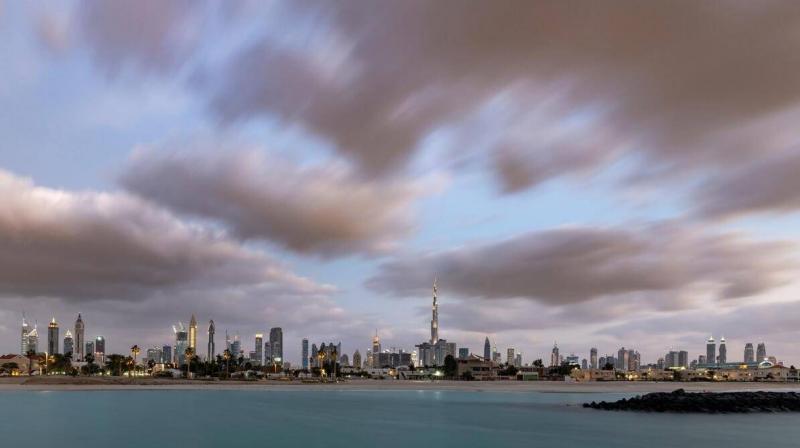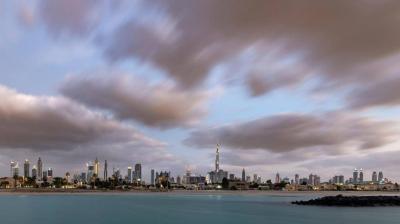The blessing of rain diminishes day by day due to climate change, and the earth's need for water is unceasing. In light of technological advancements, the United Arab Emirates is resorting to technology to induce rain and fill the land with its bounties. How is this being achieved?
The UAE Program for Rain Enhancement Science recently launched a pioneering project through the Directed Energy Research Center, part of the Technology Innovation Institute. This project, chaired by Dr. Guillaume Matras and funded in its fifth cycle, aims to explore the possibility of using laser technology to stimulate rainfall. The collaboration between the program and the National Center of Meteorology focuses on setting a timeline for project implementation and defining the necessary technical support and evaluation mechanisms. Dr. Matras's project, titled "Rainfall Enhancement Using Lasers and Remote Sensing Technology," aims to assess the feasibility of creating plasma channels within clouds to induce rain.
These countries are now facing a significant problem: how can they address their water scarcity issues? In the UAE, the average annual rainfall is less than 200 mm, a stark contrast to London’s average of 1051 mm and Singapore’s 3012 mm. Additionally, temperatures in the UAE can reach up to 50 degrees Celsius (approximately 122 degrees Fahrenheit) during the summer, with desert terrain covering 80% of the landscape. Such extreme heat can exacerbate water scarcity issues and impose restrictions on agricultural production. This initiative continues previous research in this field and includes intense investigations and laboratory experiments to understand how laser-generated plasma interacts with atmospheric particles.
The research team plans to conduct outdoor experiments using a high-energy pulsed laser along with a remote sensing system to analyze the distribution of cloud droplet sizes and molecular composition. In this context, Alia Al Mazrouei, Director of the UAE Program for Rain Enhancement Science, expressed her enthusiasm for launching the project, confirming its alignment with the "Mohammed bin Zayed Water Initiative." This initiative aims to accelerate technological innovation in addressing water scarcity and expand international collaboration. Al Mazrouei emphasized the program's commitment to supporting research initiatives that address global water challenges, expressing optimism about collaborative efforts with Dr. Matras's team in developing rain enhancement science.
The rise in global temperatures has increased pressure on regions like the Middle East, including Gulf countries, which are particularly vulnerable to the impacts of climate change. The UAE has recognized this issue. By the early 2000s, UAE Vice President Mansour bin Zayed Al Nahyan allocated up to $20 million for research in cloud seeding. The UAE also collaborated with the National Center for Atmospheric Research in Colorado and NASA to establish a methodology for cloud seeding. This project is expected to enhance learning, promote knowledge exchange, and develop innovative solutions in cloud microphysics and environmental monitoring, according to its organizers.
Research Development
For his part, project leader Dr. Matras expressed gratitude for receiving the prestigious research grant, showing eagerness to start field research. The project aims not only to enhance technical readiness but also to significantly contribute to scientific research in the field of rain enhancement. This collaborative effort includes researchers from renowned international centers such as the Weizmann Institute of Science, Swiss Federal Laboratories for Materials Science and Technology, and the Beam Instrumentation Institute at the University of Stuttgart. Through this endeavor, the program aims to build and strengthen research community capabilities while achieving sustainable progress and knowledge exchange in rain enhancement science.
According to United Nations estimates, by 2025, 1.8 billion people worldwide will face absolute water scarcity. The Middle East has emerged as one of the most water-stressed regions, with approximately 83% of the population exposed to high levels of water stress. How will this happen? Weather observers can monitor rainfall patterns by observing clouds and identifying suitable ones for seeding, aiming to increase rainfall rates. Once the appropriate cloud is identified, they guide pilots to fly their specially equipped planes that carry flares containing hygroscopic materials on the wings. Each flare contains about 1 kilogram of salt-based materials, which can take up to three minutes to burn and disperse into the targeted clouds. After introducing the seeding material into the cloud, droplet sizes increase, exceeding the cloud's ability to hold them against gravity, resulting in rainfall.
During a visit to the National Center of Meteorology, Director General Abdullah Al Mandoos stated that the technology "is based on scientific background." He added that Abu Dhabi's program does not use silver iodide, a crystallized substance commonly used as a seeding agent in other countries. Programs using this material have been subject to widespread criticism due to potential harmful environmental and public effects. However, some cloud seeding studies indicate that there is no substantial evidence proving it has any toxic effects at current levels. The National Center of Meteorology confirmed that it does not use any harmful chemicals in its operations, stating, "Our specialized aircraft only use natural salts and do not utilize any harmful chemicals." Furthermore, the center has begun developing its seeding material, referred to as 'nano material,' which is a fine salt coated with titanium oxide, proving to be more effective than current methods.




